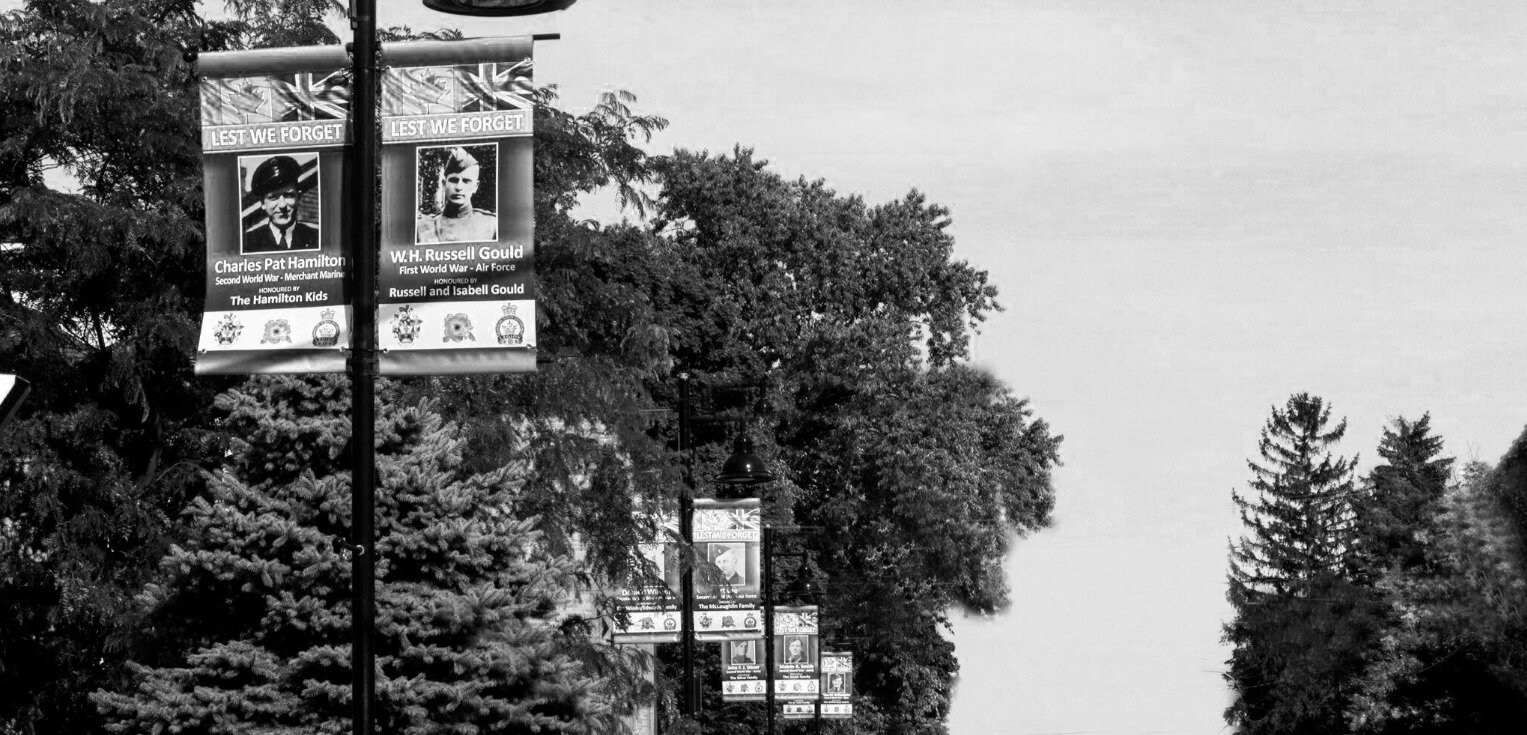
Allan (Al) McConney - Royal Canadian Navy
Allan McConney was born in Toronto on the last day of August, 1921. His father, Garnet, owned and operated a small coal and country feed mill. His mother, Florence, was one of the first women doctors in Canada, graduating with distinction! Allan graduated high school in 1939, and tried to enlist in the RCN Volunteer Reserve at the outbreak of the Second World War. However, he was told that there were no uniforms or training available, and to go home and wait! He went back to high school to bring up his grades, and finally was called to reserve duty in late spring the following year. They did very basic training a few nights a week learning foot and rifle drills. Early in the summer he was called up and training began at the Lakeshore barracks. He did anti-submarine training in Halifax and was shipped overseas to England in January 1941 where he was posted to the Canadian destroyer HMCS Skeena. They escorted convoys through British coastal waters. After a refit in Halifax in March the Skeena joined convoy escorts accompanying merchant ships as far as Iceland, trying to keep them safe from German U-boat wolfpacks. A second convoy would then take them to England. One such attack torpedoed and sank 16 ships some of which were carrying munitions. The loss of life was high from these encounters.
Another refit gave Al time to take more training in anti-submarine detection, and in March 1942 he was posted to the corvette HMCS Wetaskiwin, escorting convoys of up to sixty ships all the way across the North Atlantic. In August that year the Wetaskiwin and Skeena sank a U-boat that was following their convoy. More training followed as refits happened, and Petty Officer McConney was sent to lead the anti-submarine detail on the destroyer HMCS Sioux. Now early 1944, the Sioux was sent to Scapa Flow in the Orkney Islands off the north coast of Scotland. That March they took part in the attack on the German battleship Tirpitz, which crippled the great ship, and sent it into hiding. They then sailed for Southampton training for D-Day. On June 5th, the day before the landings, they escorted minesweepers to clear a path for the troop carriers across the English Channel to Juno Beach. On D-Day the Sioux, Vigilant and Algonquin steamed to within two miles from shore and provided covering fire from their guns for the troops landing on the beaches. They remained for the rest of the month until the troops had advanced far enough inland that they were no longer needed.
They returned to Scapa Flow and were part of the Allied operation that finally sank the Tirpitz on November 12. They also were part of the escorts for the Murmansk Run bringing supplies to Russia through all kinds of weather in the Norwegian and Barents Seas. In March 1945 the Sioux took part in the rescue of Norwegian women and children whose village was being shelled. April saw them return to Halifax for refit, and that’s where they were when Germany surrendered in May. Al volunteered for action in the Pacific, but was on leave when the Japanese surrendered. He returned to Toronto then enrolled at the University of Guelph. Once demobilized he continued his studies graduating with a Bachelor of Science in Agriculture in 1949. Al worked in his late father’s business until 1955. He met his wife, Lois, on a ski trip, and came a teacher in 1960. They eventually moved to Uxbridge in 1965 when Al accepted a teaching position at the high school. He coached skiing and football as well until he retired in 1985. He originally belonged to the Seaforth branch of the Royal Canadian Legion and transferred to the Uxbridge branch in 1966.
We Will Remember Them
NM
